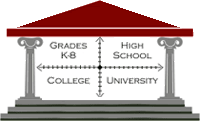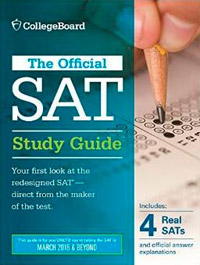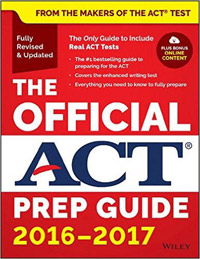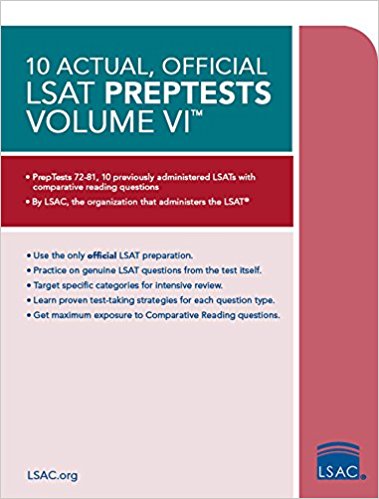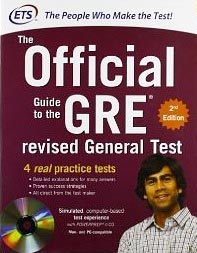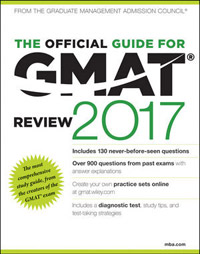Test Prep Advice Post
Why you shouldn't be a "Spotless Test Taker" and Brian's "Write Right" Method for the SAT
As an experienced SAT tutor, I find that most of my students these days are students who already have very GOOD scores on the SAT, but are looking for GREAT scores.
One of the problems that I encounter frequently with these naturally gifted students is that they like to do everything in their head because it requires less manual labor (in other words, they don't have to lift that oh-so-heavy pencil of theirs). I call them “spotless test takers” because when I take a look at their test booklets, the booklets don't have a single mark on them (except maybe for their answers circled in pencil). Sometimes, they don't even cross off wrong answers. A few of these students mistakenly believe that they are not allowed to write on the test booklet, but most of them are just plain lazy! Students: if this sounds like a good description of you, listen carefully.
The problem with SPOTLESS TEST TAKING is that although intelligent students can get away with this technique for most of the test, it is more prone to CARELESS ERRORS and is one of the main causes of TEST-TAKING FATIGUE. Fatigue causes the student to LINGER FOR TOO LONG on problems because they are constantly BACKTRACKING and re-tracing their steps.
Instead of backtracking (for example, stopping in the middle of a problem to think to oneself, “What was the question again?”) I teach my students to take these questions ONE STEP AT A TIME and to do it RIGHT THE FIRST TIME by WRITING DOWN A SHORTHAND SUMMARY of each step, or (and this is even better for the Critical Reading and Writing sections) to UNDERLINE any text that is RELEVANT, and CIRCLE any text that SEEMS TO ANSWER THE QUESTION. Yeah, it takes an extra second or two to jot something down in the margin, or to underline/circle some text. But what it allows you to do is COMPLETE YOUR THOUGHT, AND NEVER HAVE TO THINK ABOUT IT AGAIN because the information is right in front of your eyes. As a result, you never have to analyze more than ONE QUESTION AT A TIME, which allows your mind to relax more and be more accurate. This is especially helpful during the 3rd hour of the test, when many students experience “TEST FATIGUE” and BURN OUT toward the end of this long, 3 hour and 45 minute test.
I also urge my students to WRITE DOWN EVERY STEP OF A MATH EQUATION, TO WRITE THEIR OWN WORDS IN THE BLANKS ON SENTENCE COMPLETIONS, and to always CROSS OFF ANSWERS THAT ARE INCORRECT (as well as the part of the answer that MAKES IT INCORRECT). That way you never forget the word you are looking for, the number you were working with or which answer you had eliminated. I call this BACKTRACKING, and it is to be avoided at all costs because it is a huge waste of time on the SAT.
Allow me to explain. The difference between HARD PROBLEMS and EASY PROBLEMS on the SAT is often that the hard problems require more steps. While they are not technically “harder,” since the CONTENT itself is quite easy and the TECHNIQUES are always the same, these HARD PROBLEMS ARE HARD because they require multiple steps. In other words, there are a lot of places between your FIRST RESPONSE and your FINAL ANSWER where you could go wrong or get lost, just like there are a lot of wrong turns you could take on a 6-hour drive. And the EXTRA SNEAKY thing that the SAT likes to do is to CONSIDER EVERY POSSIBLE MISTAKE YOU MIGHT MAKE and to include an answer choice that corresponds to each error. So you'll think you're right because the answer you found is included in the answer choices, but you will in fact be wrong. Remember, HARD PROBLEMS ARE DESIGNED FOR YOU TO GET THEM WRONG so you have to be extra careful.
On these hard problems, “spotless test takers” frequently make CARELESS ERRORS because of INFORMATION OVERLOAD (in other words, they are thinking of so many things at once that their mind gets tired and they make silly mistakes). However, if you're using my RIGHT WRITE technique, then you have a WRITTEN representation of each step of the problem RIGHT in front of you, so you never lose track of your thoughts.
Think about it this way: Have you ever played the game “telephone” with a group of your friends? You know, the game where one person makes up a long, complicated story, and whispers it in another person's ear, and so on until it reaches the end of the line? Then the person at the end tells his or her version of the story, and it's usually something hilariously different from the original story. Great for laughs, right?
Now, this time, imagine that the first person writes a note and simply passes the note along one person at a time until it reaches the end. This wouldn't be the same kind of game, would it? The message that the last person will receive is exactly the same as the original message. That's because NOTHING IS LOST IN TRANSLATION if you WRITE EVERYTHING DOWN.
Well, HARD SAT PROBLEMS are like a GAME OF TELEPHONE in that if you try to solve every step in your head, you will sometimes VEER OFF COURSE on a problem that you could have gotten right if you had just been patient and written everything down. Why keep 6 steps in your head at once when you could just do one step at a time? Trust me, your brain will thank you!
Not only that, but if you write everything down and end up finishing your section early, it will be easier to review your work because you will be able to go back to the problem and REMEMBER WHAT YOU WERE THINKING because you will be able to SEE what you were THINKING, instead of having to re-start the problem from scratch.
“But wait a minute,” you say. “This is a timed test, and writing all of that stuff down takes too long. Why should I bother writing it all down when it's going to just slow me down?” Well, that's the beauty of my RIGHT WRITE method: writing things down actually takes LESS TIME because it ELIMINATES all the time you spend BACKTRACKING.
Take, for example, the Critical Reading Section. The reason why so many students get BOGGED DOWN on these questions is that there are MANY, MANY things you need to remember at once. For example:
1) What is the question asking?
If you try to KEEP ALL THIS INFORMATION IN YOUR HEAD, you will often end up making careless errors. Sure, you'll probably get away with it most of the time. But the main difference between 85th percentile and 95th percentile test-takers, for example, is that 95th PERCENTILE STUDENTS ARE USUALLY VERY DELIBERATE TEST TAKERS who make sure to WRITE THINGS DOWN, MARK UP THE PROBLEM AND/OR READING PASSAGE, AND CROSS OFF ANSWER CHOICES THEY KNOW ARE INCORRECT.
As for the easy problems that only require one or two steps: I will admit that it is usually not necessary to write these steps down in order to find the correct answer. But at the same time, there are so FEW STEPS ON EASY PROBLEMS that it usually doesn't take long to write them down. In a way, this will INCREASE YOUR ACCURACY on the easy problems by forcing you to slow down, thus avoiding careless errors.
Also, remember that YOU ONLY KNOW WHERE THE EASY PROBLEMS ARE ON THE MATH SECTION AND THE SENTENCE COMPLETIONS. So on the Critical Reading and the Writing Sections, it's extra important that NEVER TRY TO DO ANYTHING IN YOUR HEAD!
So, in conclusion, to all of you “Spotless Test Takers:”
Do it RIGHT by WRITING IT DOWN!
-Brian
|

